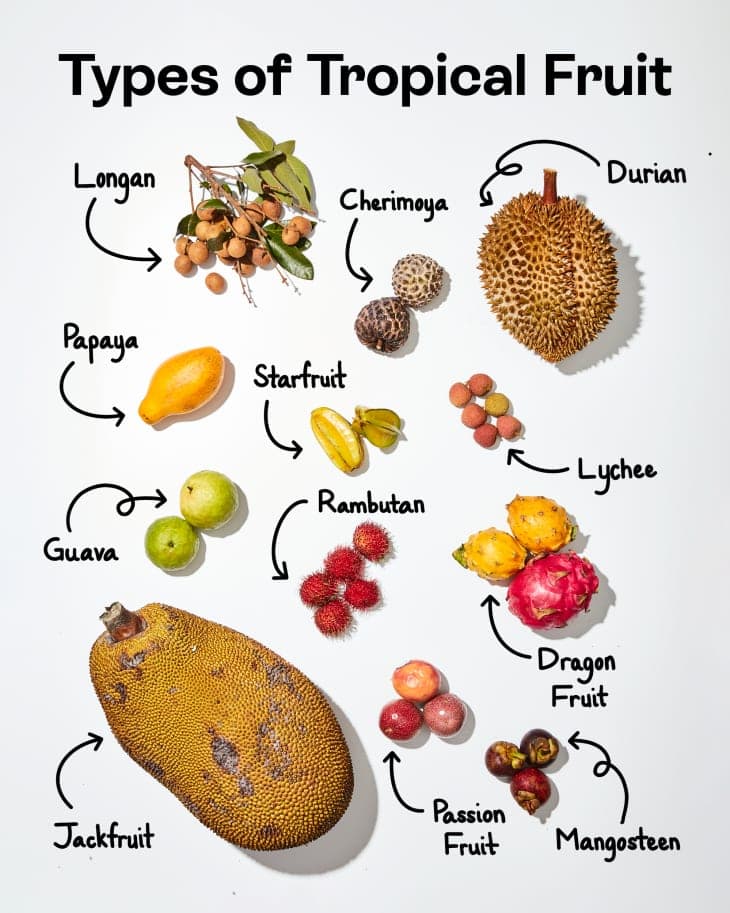A Wholesome Guide to Tropical Fruit for Parents: Nutritious Choices for Your Family
Hey there, sunny parents! ? Are you looking to jazz up your family’s fruit bowl with some vitamin-packed goodies from the tropics? You’ve anchored at the right spot! In this guide, we’re going to swim through the colorful world of tropical fruit, exploring why they’re a fantastic choice for your little munchkins, and how you can easily incorporate them into your daily meals. So, let’s dive right in and get those taste buds tingling!
Why Tropical Fruit?
When it comes to tropical fruit, there’s a whole rainbow of benefits. Not only are they bursting with flavors that’ll have your kiddos doing a happy dance, but they’re also jam-packed with essential vitamins and minerals. They’re nature’s candy, offering a sweet treat without the added sugars and artificial flavors.

Meet the Tropical Family
Under the tropical canopy, there’s a whole family of fruits waiting to be explored. Let’s start with some all-time favorites:
- Mango – Often regarded as the ‘king of fruits’, mangoes are not only deliciously sweet but also full of vitamin C, vitamin A, and fiber.
- Pineapple – With its unique taste and spiky exterior, pineapples are a hit amongst kids and are loaded with vitamins, enzymes, and antioxidants.
- Banana – Bananas are a convenient and versatile tropical fruit, providing a good dose of potassium, essential for keeping your little ones energetic and heart-healthy.
- Papaya – A buttery fruit loaded with digestive enzymes, papaya is fantastic for the digestive system and a great source of vitamin C.
- Kiwi – Known for its fuzzy skin and vibrant green interior rich with vitamin C, E, and K, kiwis are a surefire hit for boosting immunity and digestive health.
Each of these fruits bring their own superpowers to your family’s dining table, making them superb choices for snacks, desserts, or even as a fun addition to breakfast!
How to Select and Store
Choosing the perfect tropical fruit is akin to finding treasure – you need a keen eye and a bit of know-how. Here are some quick tips:
- Look for fruit that feels heavy for its size – it’s a good indicator of juiciness.
- Gently press the fruit; it should yield slightly under pressure if it’s ripe.
- Sniff out the sweet, fragrant aroma – it’s a sign of ripeness in many tropical fruits, like mangoes and pineapples.
- Once home, most tropical fruits can ripen nicely on the counter. Move them to the fridge once ripe to extend their freshness.
Serving up Sunshine: Preparing Tropical Fruits
Fear not, friends! Preparing tropical fruit is a breeze, and you can get the kiddos involved too. Here’s how to turn these exotic wonders into kid-friendly delights:
- Peeling and cutting: With a little practice, you’ll be a pro at peeling mangoes, slicing pineapples, and dicing kiwi.
- Smoothies and shakes: Blend your favorite tropical fruits with yogurt or milk for a creamy, dreamy smoothie.
- Fruit salads: Mix various tropical fruits for a simple, refreshing fruit salad – the colors and tastes will be a splash hit!
- Freeze for fun: Create homemade tropical popsicles or freeze fruit slices for a cool treat on a hot day.
Introducing tropical fruit to your little ones can inspire a love for nutritious choices and add a pop of excitement to their meals. Remember, your enthusiasm is contagious, so keep it sunny and fun!

Five Things Parents Should Know When Preparing Tropical Fruits
Get ready for a fun tropical treasure hunt in your very own kitchen! Before you set sail, there are five golden nuggets of knowledge to bear in mind:
- Introduce New Fruits Gradually: New fruits are exciting, but everyone’s tastes and tummies are different. When trying new tropical fruits, introduce them one at a time. It’s easier to identify what your children love or any sensitivities they might have.
- Teaching Moments: Use this tropical introduction as a chance to teach your kids about different cultures and biodiversity. Share fun facts about where each fruit comes from and its importance in local diets. It’s nutrition and a geography lesson bundled into one!
- Safety First: Some tropical fruits have tough, prickly, or inedible exteriors and large pits or seeds. Supervise the kiddos and teach them how to safely handle and prepare these fruits. It’s a wonderful opportunity to sharpen those motor skills and learn kitchen safety.
- Eyes and Ears: Be attentive to your child’s reactions. Some tropical fruits, like kiwi or pineapple, may cause allergies or sensitivities for some kids. Watch for any adverse reactions, such as itching or discomfort, and consult with a pediatrician if necessary.
- Get Creative: Don’t shy away from getting innovative in the kitchen. Tropical fruits can be magical ingredients in baking, added to savory meals, or even used in DIY face masks for a pampering family spa day!
Equipped with these tips, you’re on the track to making tropical fruit a regular, beloved guest at your family’s table. So, roll up those sleeves, prep those taste buds, and let the tropical tastes take you on an unforgettable journey.
For more great fun click here. For more information see here
Disclaimer
The articles available via our website provide general information only and we strongly urge readers to exercise caution and conduct their own thorough research and fact-checking. The information presented should not be taken as absolute truth, and, to the maximum extent permitted by law, we will not be held liable for any inaccuracies or errors in the content. It is essential for individuals to independently verify and validate the information before making any decisions or taking any actions based on the articles.




